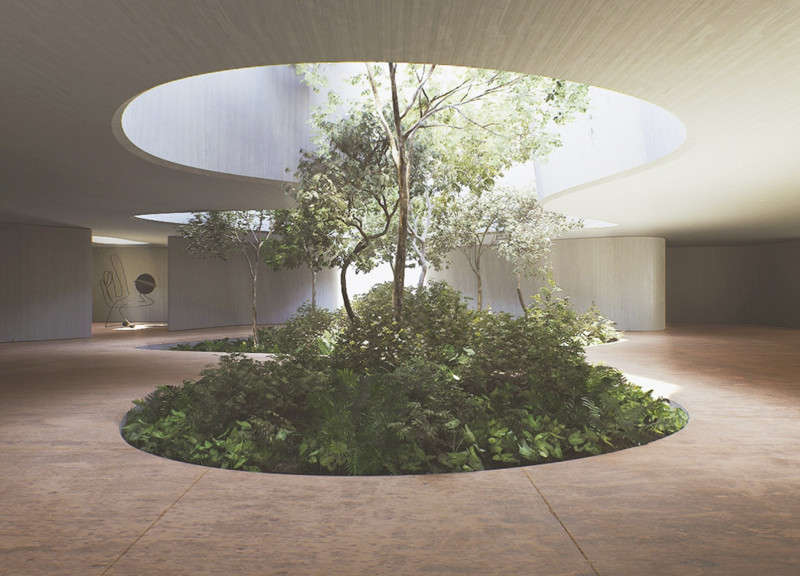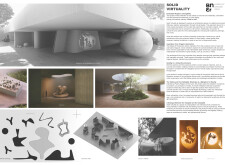5 key facts about this project
### Overview
The pavilion “Solid Virtuality,” developed for the BNCR Unbuilt Award 2024, represents a critical investigation into the relationship between physical materiality and the concepts of virtual reality. Located within an urban context, it is designed as a response to the limitations of two-dimensional digital spaces, offering a tangible form that invites exploration and interaction. The intention is to engage visitors in a dialogue about the nature of reality, encouraging them to reflect on their perceptions and experiences.
### Spatial Strategy and User Experience
The pavilion's design incorporates a variety of volumetric forms that combine organic and geometric shapes, allowing for dynamic spatial experiences. Internally, the integration of sculptural artifacts—crafted from materials such as concrete and metal—serves to embody abstract ideas. These elements enhance the sensory interaction within the space, fostering a unique user experience that evolves as one navigates through the pavilion. Additionally, strategically placed openings, including a circular skylight, maximize natural light and create a compelling interplay of light and shadow, further enriching the spatial narrative and inviting contemplation.
### Materiality and Sustainability
Material selection is central to the project’s themes, highlighting a balance between permanence and approachability. Concrete is employed for its structural integrity and versatility, providing a robust foundation while maintaining a raw aesthetic. Metal components introduce modern textures that complement the overall design. The incorporation of greenery within the pavilion not only promotes tranquility but also reinforces a connection to the natural environment, addressing sustainability concerns while bridging the dichotomy between artificial and organic elements. This thoughtful approach to materiality underscores the pavilion’s intent to engage users with both art and nature.




















































